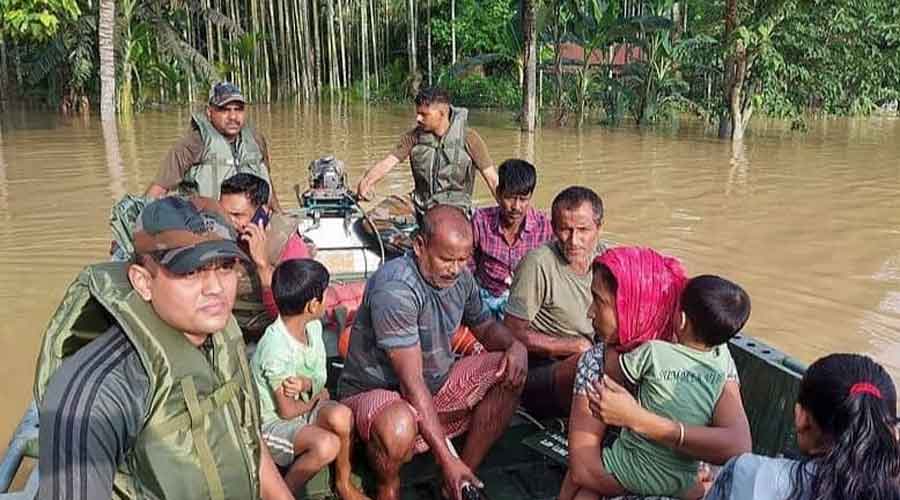Human tragedy occurs in its own time, untouched by gyrations on the political trapeze. The deaths caused by this year’s floods in Assam are tragic enough; added to the loss of homes, crops, livestock and farmland, the tragedy takes on agonising proportions. Although this year’s floods are particularly severe, it is also true that floods occur annually in the state. Assam’s main rivers, the Brahmaputra and Barak, with their many tributaries, come speeding down the mountains heavy with rainwater and sediment which they deposit on the state’s flood plains. Topography cannot be changed, and Assam’s people are used to floods, welcoming once upon a time the enriched waters that fertilised the soil. That situation changed, even before the symptoms of climate change became obvious. Deposition on river beds continue to raise their levels, while the abrasion of eroded matter on the banks keep widening the channels, swallowing up agricultural land and living areas. Repairs to embankments, made since the 1960s, cannot prevent their breaching. Assam keeps losing huge areas of arable land, human lives, domestic animals and even protected ones in the Kaziranga National Park.
Climate change has intensified the tragedy. While regular monsoon rains are decreasing, extreme rainfall events have increased. Instead of the steady monsoon rainfall — heavy in the Northeast even in decline — there are sudden inundating events, with landslides exacerbating the crises. While melting glaciers add to the flow, construction, wetland encroachment and human migration increase the dangers of instability in this earthquake-prone region. Since none of this happened in a day, why are no viable protective measures in place? Floods cannot be prevented, but its effects can be mitigated. Maintaining embankments may help, but more important is reviving the wetlands to help drainage. Long-term measures would require flood-zoning, with bars on farming and construction in places. Advanced early-warning systems and shelters built on high land could help, as well as other means to protect the people and the economy. For these, a government would have to spend time, pay attention to experts, plan and allocate funds, to say the least. These do not seem to have happened so far. The present chief minister, of course, is too busy welcoming political guests to the marvellous hotels in Guwahati; maybe overseeing the flood situation is just part of his annual routine.










